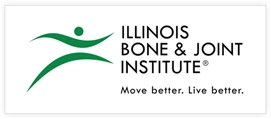ACL Tear Treatment Options
The treatment options for an ACL tear depend on several factors, including:
- Severity of the tear: ACL tears can range from mild to severe, with more severe tears requiring more intensive treatment. A complete tear of the ACL, for example, will often require surgery to repair.
- Patient’s age and activity level: Younger, more active patients, such as athletes, may require more aggressive treatment to return to their desired level of activity. Older patients or those with a more sedentary lifestyle may be able to manage their symptoms with conservative treatments like physical therapy.
- Associated injuries: If the ACL tear is accompanied by other injuries, such as a meniscus tear or other ligament damage, the treatment plan may need to address these injuries as well.
- Patient’s overall health: Patients with certain medical conditions or who are taking certain medications may not be candidates for surgery or may require modified treatment plans.
- Patient’s preferences: Ultimately, the patient’s preferences and goals should be taken into consideration when determining the best treatment plan. Some patients may prioritize returning to sports or physical activity as soon as possible, while others may prefer to avoid surgery and manage their symptoms with conservative treatments.
Dr. Patel may recommend nonsurgical treatment for isolated partial tears, near total tears, or patients who are older and less active. Nonsurgical management is recommended for patients who are elderly, those who lead a sedentary lifestyle, and for patients willing to give up high risk activates. Nonsurgical management in these circumstances has been shown to be successful.
Non-operative treatment includes:
- Rest and Physical Therapy: includes rest, ice, compression, and elevation (RICE) to reduce swelling and inflammation. Physical therapy can help strengthen the muscles around the knee joint, improve range of motion, and restore stability.
- Bracing: A knee brace can be used to support the knee and reduce the risk of further injury. However, a brace cannot replace a torn ACL and is usually not effective as the sole treatment for an ACL tear.
There are several surgical options to repair an ACL tear, and the specific approach will depend on the patient’s individual needs and the surgeon’s preference. The most common surgical techniques for ACL repair include:
- Anterior Cruciate Ligament (ACL) Repair with BEAR Implant: The Bridge-enhanced ACL restoration (BEAR) implant, FDA approved in December 2020, is the first technology that enables the body to heal a torn ACL. It is intended to serve as an alternative to ACL reconstruction with a graft. The BEAR implant serves as a bridge between the torn pieces of the ligament.
- Autograft reconstruction: This technique involves taking a graft (tissue) from another part of the patient’s body, such as the hamstring or patellar tendon, and using it to reconstruct the torn ACL. Autograft reconstruction is the most commonly used technique for ACL repair, as it has a low risk of graft rejection and good long-term outcomes.
- Allograft reconstruction: This technique uses a graft from a donor, which can be either a cadaveric donor or a living donor. Allograft reconstruction is less commonly used than autograft reconstruction, but it may be preferred in certain cases, such as when the patient has limited tissue available for an autograft or when there is a higher risk of infection with an autograft.
- Hybrid reconstruction: This technique combines elements of autograft and allograft reconstruction, using an autograft for one part of the ACL and an allograft for another part. Hybrid reconstruction may be used in cases where a full autograft is not possible or when the surgeon feels that combining the two graft types will lead to a better outcome.
The choice of surgical technique will depend on the patient’s individual needs and the surgeon’s experience and preference. It’s important to discuss the options with the surgeon and carefully consider the risks and benefits of each approach.
- There is no rush, allow this to be an evolution and allow your judgment to surface.
- Define for us your athletic goals. Where are you on the spectrum from low level recreational to high demand? Only you can define that for us. Remember, it is not appropriate to say, “I am not a professional athlete” to rationalize your objective. Every individual must be dealt with as a separate situation that must be personalized.
- Timing of the injury must be matched with your agenda, season, goals, and priorities.
Dr. Ronak M. Patel is a double board-certified orthopaedic surgeon and sports medicine physician. He completed his bachelor’s degree, medical degree, and residency training at Northwestern University. He, then completed his fellowship training at the Cleveland Clinic. He specializes in the treatment of complex knee, shoulder and elbow injuries and degenerative conditions. Contact him to schedule a consultation to learn more about how he can help you return to the life you love and the activities that make life worth living. He serves teens and adults in Chicagoland and NW Indiana.
At a Glance
Ronak M. Patel M.D.
- Double Board-Certified, Fellowship-Trained Orthopaedic Surgeon
- Past Team Physician to the Cavaliers (NBA), Browns (NFL) and Guardians (MLB)
- Published over 49 publications and 10 book chapters
- Learn more

